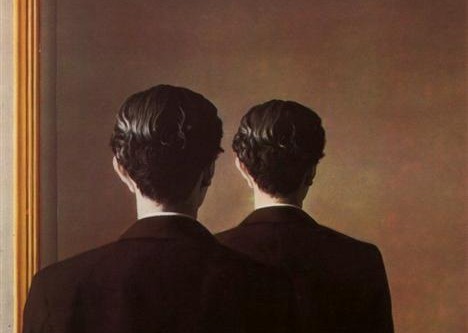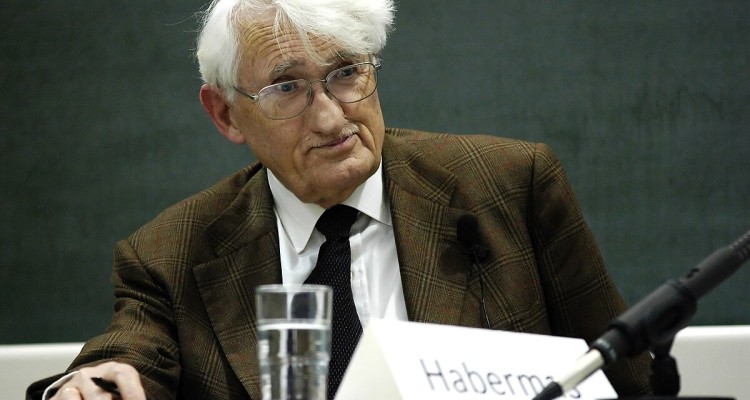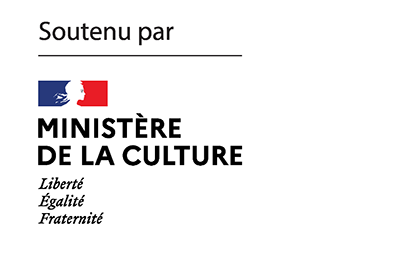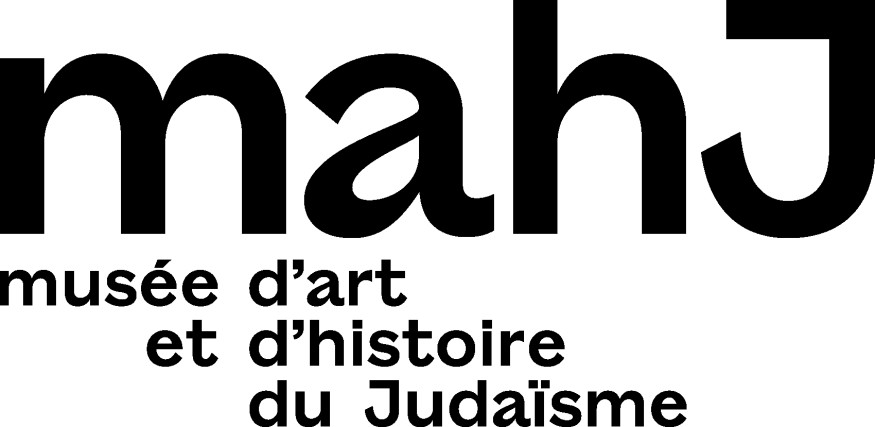Between the first and second rounds of the French presidential election, the voice of student protest made itself heard, first at the Sorbonne, then at the Ecole des Hautes Etudes en Sciences Sociales (EHESS), where a building on the new Aubervilliers campus was defaced. The watchword of the movement at both institutions was the rejection of a binary choice between ‘fascism’ and ‘neoliberalism.’ But at the Aubervilliers campus, where the students covered the walls in graffiti (much of it quite vitriolic), authorities noticed some antisemitic messages. The students explained themselves about this matter: “The occupation is antifascist and firmly condemns any antisemitic act. We erased the hateful drawings that unfortunately appeared on some of the walls, and we would have erased [the messages], had we seen them.” K.’s special correspondent Karl Kraus investigates this activity of erasing antisemitism, a curious endeavor for a movement otherwise prodigious in its expressions of murderous desire.

Generational conflicts sometimes express themselves at surprising moments. The two weeks between the first and second round of the French presidential elections recently provided us a good example of this historical curiosity. This sort of conflict is certainly par for the course: our society has demanded great sacrifices of young people during the global pandemic, absent much recompense, save vague promises of a desirable future. But how does it turn out that a prosaic matter like housework puts the flame to the kindling? This is what has occurred. “How does one correctly do spring-cleaning?” Such was the question at the heart of the student protest movement, at a time when the country was faced with a choice between an apostle of technocratic ho-hum and a high priestess of fascism.
The students decided to do the spring-cleaning in their universities. The demands of the collective, which seized control of the Sorbonne, Ecole Normale Superieure’s Jordain campus and Sciences Po, seemed rather amorphous. The cries of “neither Macron nor Le Pen” might remind people of good will of the May ’68 chant of “neither God nor master.” But the slogan rather lacked in metaphysical depth; the chant’s candor seemed liable to arouse the incomprehension of spectators in the face of such a denial of reality. One must admit that the authorities did not leave much time to students at the three institutions in center-city Paris to formulate a political program. The Ministry of Higher Education soon called in the police. As the walls closed in, the students resolved to discharge the most pressing task of the occupation: ridding the premises of old and ratty furniture. The occupiers tossed the furniture out the window, and so the question of cleaning surged to the center of the movement. The urgency in which the enterprise was carried out reassured us on one point: the university classrooms must still contain some of those old schoolboy chairs, the ultimate humiliation for the college freshman who believes that his arrival at university represents emancipation from a state of minority.

But it was only a few days later, when students occupied the Aubervilliers campus of the EHESS, that we could measure the true scope of the movement’s political program. The forces of order tarried somewhat in restoring calm to this suburban neighborhood; the students had time to sit and reflect on how to manage the building. The premises were new, opened in September, equipped in the fashion of a normal European university; no one could mistake the furniture for that of a primary school.
The most orgiastic part of spring-cleaning, the defenestration of old furniture, could be skipped. The building was even well-maintained, permitting the students to set down their cleaning equipment and concentrate on the more pleasant task of rearranging the spaces appropriated for the student movement. The movement’s conception of the commonweal revealed itself in their work on the material structure of the place: this new generation, which one spuriously accuses of being addicted to smartphones, first made information technology disappear; the presence of such devices was no doubt detrimental to the place’s conviviality and role as a space of shared reflection. Then, in attempting to ram down the building’s closed doors, the movement expressed a marked preference for an open space or even co-working concept, even if at this point no trace of the occupation’s intellectual activity could be found. And finally, the students ornamented the walls. One has not really moved somewhere, as long as the walls remain bare; the new inhabitant must grapple with the arduous task of interior decoration and design. Decoration becomes even thornier when a couple moves in together: each step in the process poses dangers. His or her college posters for the living room? Whose family heirloom for the dining room? This is why Ikea has solutions at hand for this problem: those chiaroscuro prints whose lack of sense of masquerades as a depth of sense. Hang up a few of them and the relationship is saved!

The students managed to avoid this pitfall of new love! The movement decided that in the building, spreading over seven floors, replete with pure-white walls, each individual could decorate as he pleased. This choice privileging the flowering of each individual must also be seen as indicating the politics of this new generation. What a welcome change from those prior generations of students who prattled the whole night long about the drafting of a common program.

There is a real space for pluralism and the expression of personal sensibilities. This political decision became apparent in the aftermath of the occupation, when we learned that the occupiers had not cooperated in order to settle on the right tags for the building’s walls. Tarnished by the discovery of antisemitic graffiti, the movement felt itself compelled to write an open letter for the Mediapart website:
“Because the press and the university administration seem to doubt it, we clarify that we condemn absolutely any message of an oppressive character, namely the two pieces of antisemitic graffiti that we were alerted to. The occupation is antifascist and firmly condemns any antisemitic act. We erased the hateful drawings that unfortunately appeared on some of the walls, and we would have erased [the messages that have since been published in the press], had we seen them.”
How precious this account of activity during the occupation is! We comprehend in a better sense what is at the heart of the youths’ action. In addition to its preoccupation with viewpoint pluralism, the movement has remained true to the housework theme first seen at the Sorbonne; this demonstrates a laudable sense of continuity and unity, amid a diversity of opinions. We espy also a more nuanced image of the young occupier, sauntering along, marker in hand, reconnoitering the conquered space. Because in the other hand he holds a sponge, ready to erase what he does not want to see, and what he nonetheless has the “misfortune” of encountering.
This news stupefies us. Before hearing this account, we believed that the students had no means to express themselves in the concrete space of the university other than tagging the walls. It is regrettable that these students conflate the university building and “the state,” which has indeed put them through the crucible in recent times. But this is not surprising: the building frustrates them, deprives them of autonomous student space. And this, along with the primary school chairs of the Sorbonne, attest to the incapacity of their elders to view them as adults and equals. And thus we see them gliding along the hallways, marker in hand, to voice their anger. It is disappointing but predictable that words other than loving ones emanate from these markers. Ditto for the absence of any form of humor. But again, the psychologists have told us that young people have been very depressed since the start of the coronavirus pandemic.
The sponge in the other hand, however, is remarkable. There is nothing more curious than a political movement protective enough of pluralism to weigh itself down with equipment to erase “hateful” messages of one sort, especially when the majority of messages left in perfect serenity were also completely hateful. “Death to the pigs,” that is not so head-turning, except for vegetarians or vegans. “Death to the bosses,” now, that sounds a bit hateful. “A white man, a bullet,” read another message. How concise! In five words, we learn which group is concerned and the modality of execution. And what to say of death threats made against specific people, such as the one directed at the president of the EHESS? The EHESS above all places, which is the university supposed to be offer the place where one can elaborate critiques of present societies, including the forms of oppression that this society generates. This sort of hate does not seem to have occasioned much “misfortune,” nor does it appear to have attracted the students’ sponges.

How does one imagine the scene? Young people rove around an immaculate building – each on his own or in a small band of like-minded people – giving free rein to their rage and hate in sober formulations that owe nothing to Aragon or Debord. The students leave behind tags expressing their solidarity with the wretched of the earth and spout off on their desire to see the demise of all viewed as dominant (whites, straights, men, elites, university administrators, etc.). But then some students perceive a horrible antisemitic tag, which places them in direct confrontation with the limits of their political theory. How can these Jews be at the same time a minority whose members are discriminated against, sometimes persecuted and even murdered, but also among the rulers of the earth, thus precluding solidarity with them? As soon as one encounters a reminder of such a contradiction, cries of woes ring out. “Pass me the sponge!” “Hide these words that I do not want to see.” The formulation of the wail, eloquent as Molière or crude as Céline, matters little. The message is clear: eliminate this thing on which my desire fixates in a guilty manner. Erase with the antisemitic tag the culpability of my desire. Pass the sponge, yet another time!
The collective imagination is tamed enough, of course, to smother in the cradle those conspiratorial notions according to which the entire Jewish community is seen as dominators. But the suffering of the Palestinians raises doubts about the place of the Jews in social causes, from which other representations arise, of which we know nothing. Or of which we want to know nothing. No one in today’s France willingly thinks of such things, or of that thing. The students who present themselves as tried-and-true members of the far-left no more than others. Radical as the students purport to be, this choice reveals them as derivative. What is less derivative is the idea of tagging with one hand and erasing with the other.
The entire matter turns on whether the sponge accompanies the act of graffiti or if one looks for it in haste on the discovery of an antisemitic tag. I bet that the sponge is constantly present. And if it is not, this occupation will have clued in the students on the need for the ubiquitous sponge. Because as soon as politics is reduced, as it is here, to expressions of oppressed and scourged minorities, we can bet that the hate of Jews will soon follow in train. Because there is an Islamic antisemitism which one refuses to acknowledge, in the name of pluralism and anti-colonialism. Because solidarity with the Palestinians (as opposed to those of the Kurds or Uighurs) seems a rite of passage for any minority that wants to join the chorus of the aggrieved. But also because in our societies, the Jew embodies the minority who refuses political or cultural secession.
This is why addressing antisemitism, perceiving something here other than “a misfortune,” doing something more than erasing the superficial cause of “the misfortune,” would demand that one seriously reflect on the meaning of the term “minority politics.” This would mean to descend from the celestial heights of the pure victim, whose holiness means that he can dictate the meaning of politics. And that would obligate activists to make substantive recommendations for a more just organization of society. In other terms, this would require actors to surrender grievance and come up with ideas for the real integration of minorities into society. But that is a lot of work, a lot more than a pass of the sponge, far too much for a simple spring-cleaning operation.
The “rearrangement” of spaces at the EHESS, based on the aforementioned events, holds out little hope on this front. At least as long as the sponge is not used everywhere, as long as one cannot see the blindspot of this generation. At stake are the aspirations of these students, for whom the sole desire antisemitic graffiti produces is a sentiment of “misfortune” and the regret of not having covered it up in time. But the students should rest assured: this blindspot is shared by a broad swath of public opinion in France today, even the progressive one. The movement is not alone when it prefers prudery to politics, when it bewails “the misfortune” of antisemitism rather than addressing its causes. It seems that the conflict of generations has been called off!
Karl Kraus
P.S.: We read in the press these touching words from a young occupier: “Maybe it happened on the last night? It’s really aggressive. I don’t know. Can you imagine? I’m 22 years old, I did the occupation, and now I’m reading in the press that we are antisemites.” I admit having not adequately considered the woe of these youths, and acknowledge having inadvertently contributed to it, this aggression that they suffer. It is true that they have indeed “done” something, and that should be enough for us to be proud of them. In my old age, I forgot that we congratulate a toddler on his first steps, and say nothing of his stumbles. Because we have seen too many stumbles to marvel at this infantile shuffle. It is such that I give up the ghost here. I beg the pardon of this child of 22 years old!









